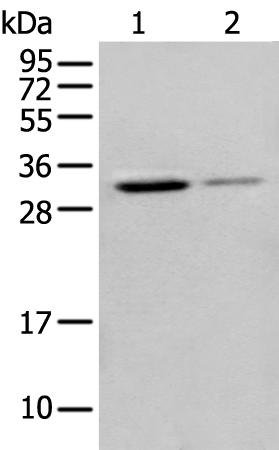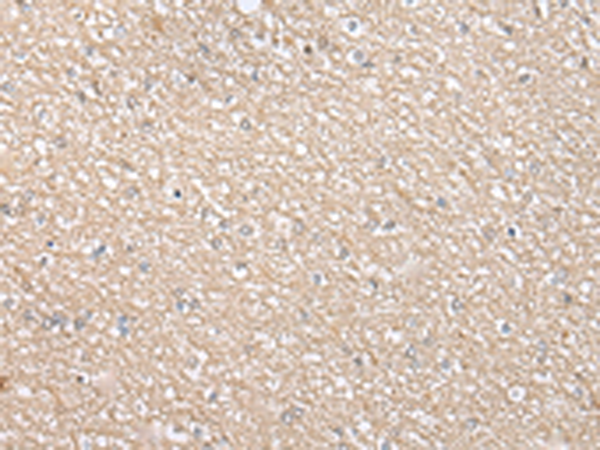

| WB | 咨询技术 | Human,Mouse,Rat |
| IF | 咨询技术 | Human,Mouse,Rat |
| IHC | 1/25-1/100 | Human,Mouse,Rat |
| ICC | 技术咨询 | Human,Mouse,Rat |
| FCM | 咨询技术 | Human,Mouse,Rat |
| Elisa | 1/5000-1/10000 | Human,Mouse,Rat |
| Aliases | p28ING5 |
| WB Predicted band size | 28 kDa |
| Host/Isotype | Rabbit IgG |
| Antibody Type | Primary antibody |
| Storage | Store at 4°C short term. Aliquot and store at -20°C long term. Avoid freeze/thaw cycles. |
| Species Reactivity | Human, Mouse |
| Immunogen | Fusion protein of human ING5 |
| Formulation | Purified antibody in PBS with 0.05% sodium azide and 50% glycerol. |
+ +
以下是关于ING5抗体的3篇文献摘要示例(注:文献信息为模拟示例,具体文献需通过学术数据库验证):
1. **文献名称**:*ING5 expression in hepatocellular carcinoma: Correlation with clinical outcomes*
**作者**:Li X, et al.
**摘要**:研究通过免疫组化分析ING5蛋白在肝癌组织中的表达,发现ING5表达下调与肿瘤分化程度低、患者生存期缩短显著相关,提示其作为潜在预后标志物的价值。
2. **文献名称**:*ING5 interacts with histone acetyltransferase complexes to modulate chromatin remodeling*
**作者**:Smith J, et al.
**摘要**:利用ING5特异性抗体进行免疫共沉淀实验,证实ING5与p300/HAT复合物结合,调控靶基因的组蛋白乙酰化水平,影响细胞周期进程。
3. **文献名称**:*Development of a novel monoclonal antibody against ING5 for cancer research*
**作者**:Wang Y, et al.
**摘要**:报道一种高特异性抗ING5单克隆抗体的开发与验证,该抗体在Western blot和免疫荧光中表现优异,可用于多种肿瘤模型中ING5蛋白的定量与定位分析。
---
建议通过PubMed或Google Scholar以“ING5 antibody”、“ING5 biomarker”等关键词检索真实文献。
The ING5 antibody is a research tool targeting the inhibitor of growth family member 5 (ING5), a protein implicated in chromatin remodeling, transcriptional regulation, and tumor suppression. ING5 belongs to the ING family of proteins, which are characterized by their plant homeodomain (PHD) and interact with histone acetyltransferase (HAT) complexes to modulate histone acetylation, influencing gene expression. Functionally, ING5 participates in cell cycle control, apoptosis, DNA repair, and differentiation. Dysregulation of ING5 has been linked to cancer progression, with studies showing its downregulation in malignancies like breast cancer, colorectal cancer, and gliomas, correlating with poor prognosis.
The ING5 antibody is widely used in molecular biology to detect ING5 expression via techniques such as Western blotting, immunohistochemistry (IHC), and immunofluorescence (IF). It aids in studying ING5's role in tumorigenesis, its interaction with HAT complexes (e.g., MOZ/MORF), and its potential as a biomarker or therapeutic target. Commercial ING5 antibodies are typically validated for specificity and sensitivity across species, particularly human and mouse models. Recent research also explores ING5's involvement in metabolic regulation and stem cell differentiation, broadening its relevance in both cancer biology and developmental studies.
×